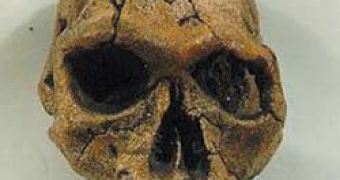Geometry has changed our family tree. A new computer analysis published in the journal Nature re-drew evolutionary links between extinct humans, apemen and us. The team led by Dr Rolando Gonz?lez-Jos? of the Centro Nacional Patag?nico-CONICET, Puerto Madryn, Argentina employed 4 geometric measurements from human and ape fossil skulls, assessing variables like skull roundness and facial retraction.
The researchers analyzed 20 skulls belonging to our species, Homo sapiens, our closest living relatives (the chimp and the gorilla), and complete fossil skulls of our extinct relatives, from gracile australopithecines (Australopithecus afarensis and A. africanus) and robust australopithecines (Paranthropus boisei, P. robustus, P.aethiopicus) to Homo habilis, Homo erectus, Homo ergaster, Homo heidelbergensis, and Homo neanderthalensis.
The analysis comes to challenge previous concepts about Homo habilis, that lived between 2.3 to 1.6 Ma ago. A study published in 1999 showed that this species should no longer even be considered human, pointing to Homo rudolfensis as the first Homo species.
"Simply put, H. rudolfensis presents a more retracted face than H. habilis, and a more globular and rounded cranial vault. These particular and subtle differences confer a more derived aspect to the H. rudolfensis skull and place it in a derived position with respect to H. habilis", said Gonz?lez-Jos?.
The new analysis shows that species making the genus Homo are indeed related, and the oldest species is Homo habilis, situated at its root, with the most recent species, H. sapiens (modern humans) and H. neanderthalensis (Neanderthals) being evolutionary cousins, not types of the same species.
The study also shows that H. heidelbergensis is not the last common ancestor of Neanderthals and modern humans. This role seems to have been taken by Homo erectus. H. heidelbergensis seems to be just a species that later evolved into the Neanderthals (recent researches show that H.heidelbergensis evolved from H. antecessor, which, in its turn, evolved from H. erectus).
Modern humans may have evolved from H. ergaster, whose ancestor was H. erectus.

 14 DAY TRIAL //
14 DAY TRIAL //